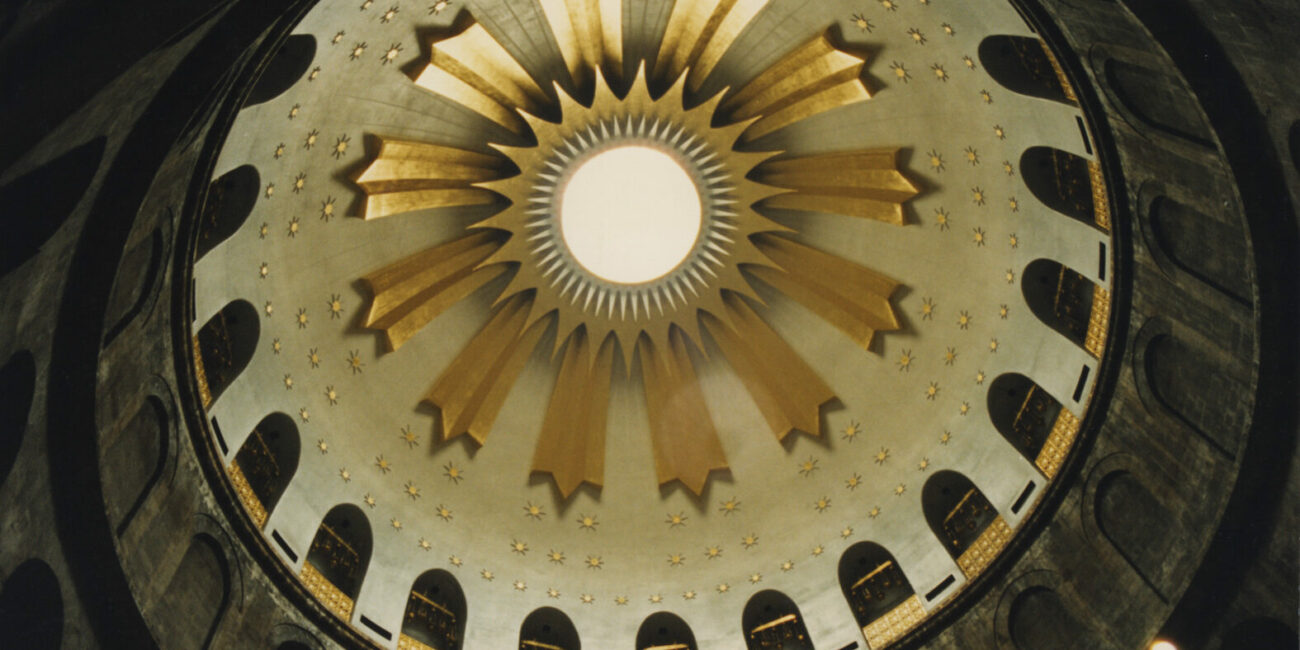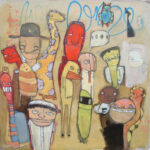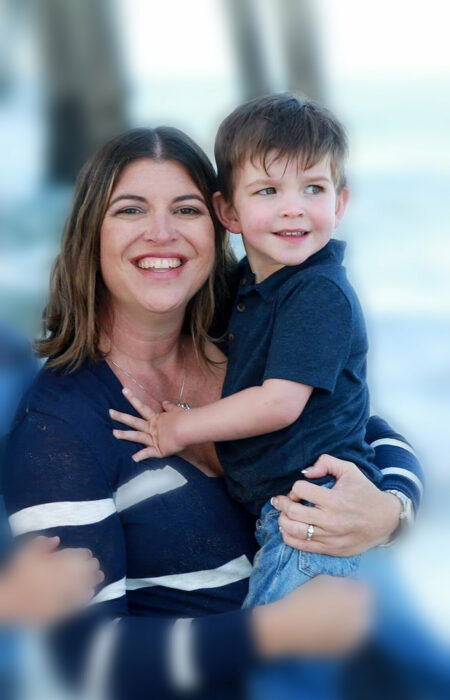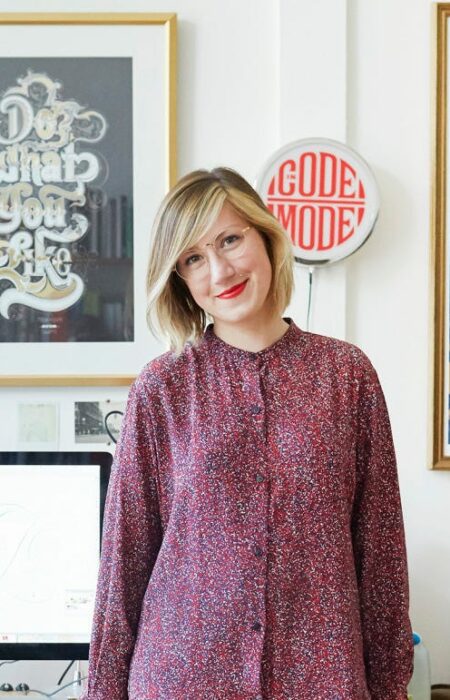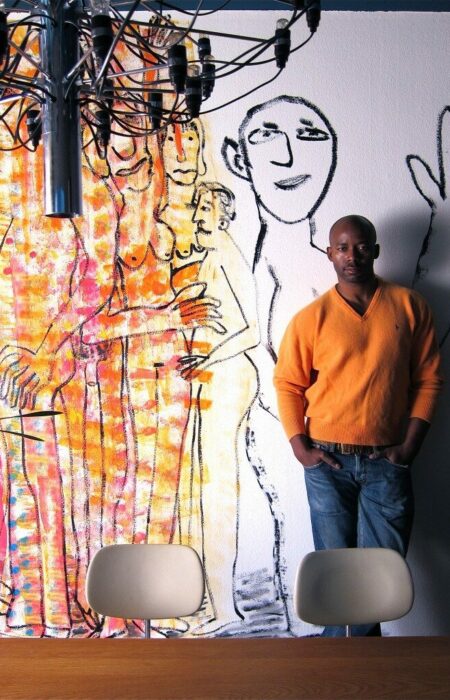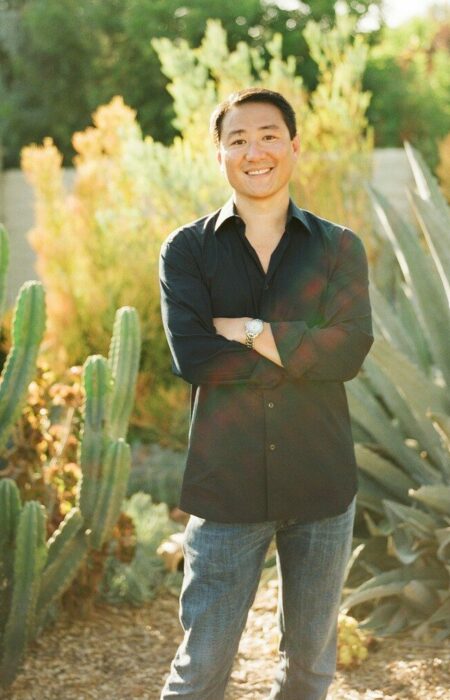I’m thrilled to interview Ara “Corky” Normart, a prolific watercolorist from Central California who has also achieved great success in other media. Corky was a friend of my parents, so I grew up with several of his works in our home and studied them even as a kid. Along with his painting companions in Fresno, in the late 1950s and early 1960s Corky experimented with watercolor and began to produce a vast array of work that continues to evoke a unique sensibility of that time and place. Still hungry to learn and still as prolific as ever, Corky expresses an enthusiasm for art and an ongoing desire to do better.
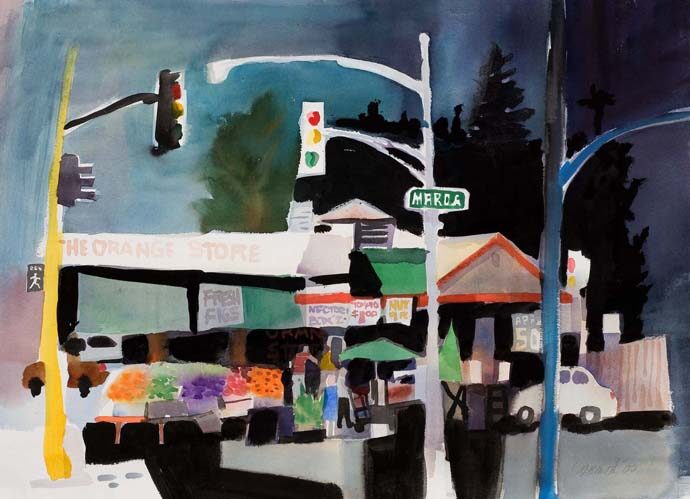
Evening Stand, by Corky Normart
I wanted to ask you about the range of work you do — paint, sculpture, Dalle de verre glass windows, and furniture. Have you always had this range, or did it come about as a means of stretching artistically? And do you have a preferred medium to work in?
My early art background, beginning with college, focused on watercolors in a classroom setting. But along with that, I was involved in many different art activities such as designs for floats in parades that used to be a regular annual event, designing posters for dances and coming up with unique settings for dances and other student events. After college my first job was as a television artist in Fresno, and this came at a time when there was no other television production being done in Central California. The staff was almost all from radio, so what we did in the art department involved set design, slide production for television ads, signage, art for film, stop-action animation…all kinds of projects and with no one with any experience in these areas. So it was learn as you proceeded, being as creative as possible along the way. I think that early experience has prevented me from being gun shy when faced with new projects, even though I had no training or previous experience in that particular “art” field. But all art is basically the same. Good composition, proper relationship between sizes, textures, lines. It all includes the same decision-making challenges. If I have one preferred medium, it has to be what I’m working on right now. I enjoy it all.
Have you had formal artistic training in each of these disciplines or are you self taught?
Watercolor was what I learned in college and what I learned working with my two friends, Rollin Pickford and Gay McCline. (see article on Fresno Art Museum page about this trio’s work)
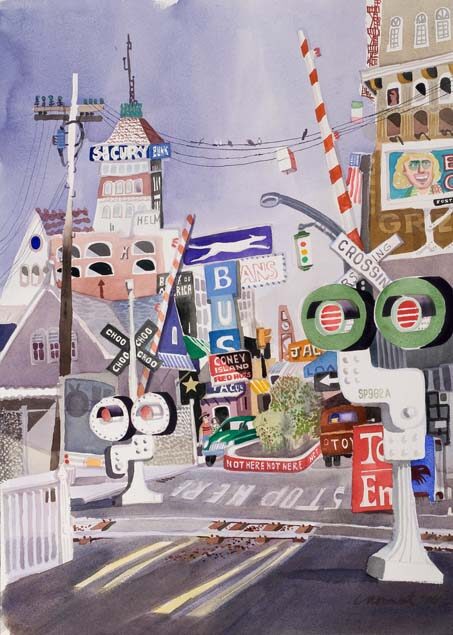
SP Crossing, by Corky Normart
Conventional wisdom tends to advise focusing on just one area of work, but many artists with your kind of long-term dedication seem to experiment with other media. What would be your advice to new artists who are not sure what their path will be?
Try as many different approaches as possible. I do realize that you can get better by spending more time with one or another approach, but as I said before, all art has the same elements. I have spent many years with watercolor, both in school with an excellent teacher and for twenty years after that with two outstanding watercolorists as painting companions. There were weekends when we would paint both Saturday and Sunday together, producing at least two paintings a day and some days as many as four each, then working on our own one or two nights a week. It was a lot of painting. I think at one point I counted over 1200 paintings I had produced. You learn to eliminate a lot of mistakes that way and get comfortable with what does work.
Most of your painting is done in watercolor. What is it about watercolor that suits your creative vision and temperament?
I think it‘s the short time between start and finish that appeals to me the most. Jumping around as much as I do from medium to medium is a clue that I like to try different things, so spending six months waiting for an oil to properly dry can’t be as satisfying to me as working on a watercolor and knowing what you have in two hours or less. Spending much more time than that on a watercolor will create a disaster, at least the way I approach it.
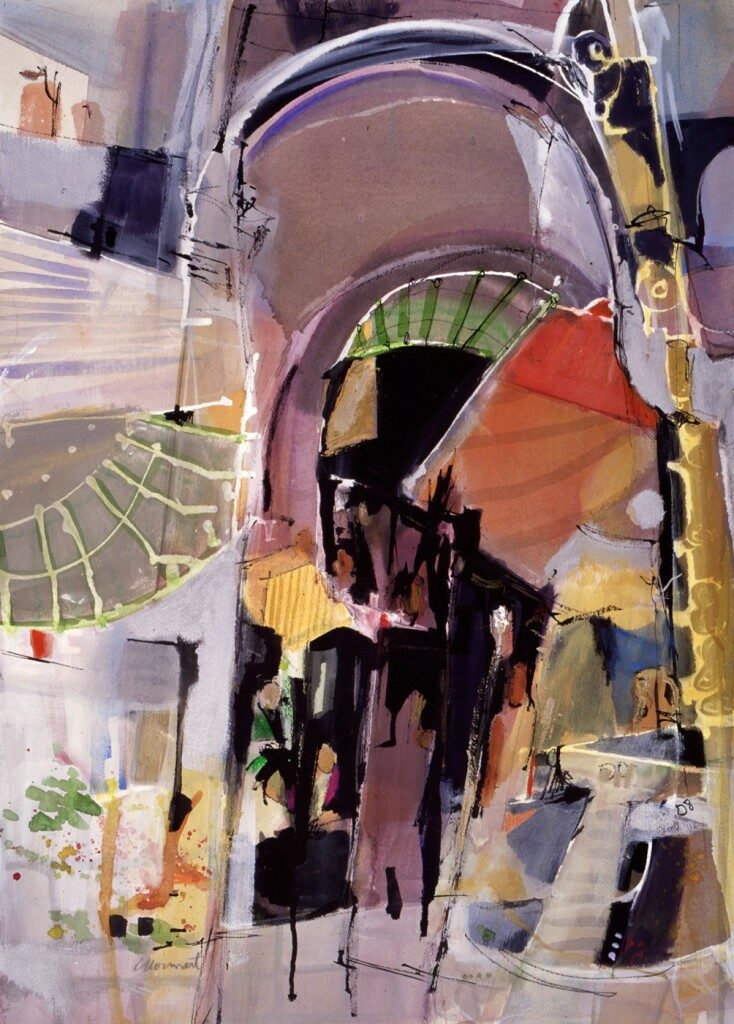
Oriental Market, by Corky Normart
Many of your watercolors strike me as having an early 1960s sensibility to them. Is it the color palette, the shapes, the depiction of road signs or commerce? How would you describe your paintings?
That’s probably when I really got comfortable with what I was seeing and doing. I think my more recent work is changing a bit. But I still go back to that period of my development from time to time. I think “spontaneous” describes my paintings best. Again, that’s easier to accomplish in watercolor than with any other medium. I am trying for a spontaneous look in acrylics and even sculpture. I might get there some day.
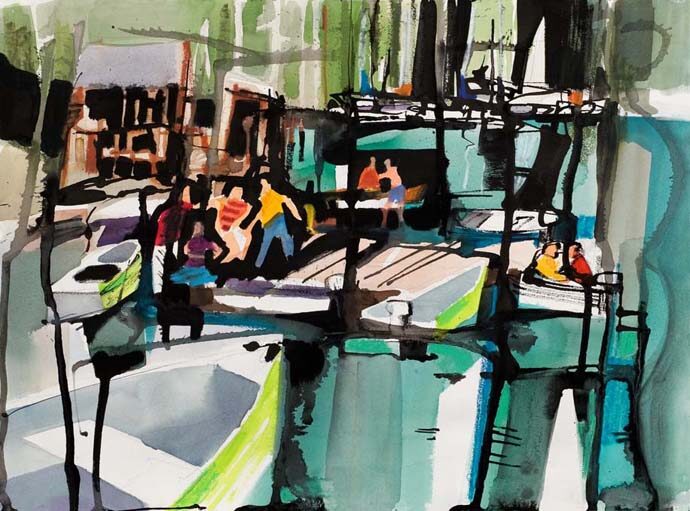
Sierra Marina, by Corky Normart

Bluff Pond, by Corky Normart
How did your commission come about to design and supervise the restoration [1994-1997] of the Great Dome over the Tomb of Jesus Christ at the Church of the Holy Sepulchre in Jerusalem?
I had a very good friend, Brother Donald Mansir who had lived in Jerusalem for a number of years and was a good friend of all three custodians of all Christian Holy Places there. He saw the need for the restoration, made the contacts, arranged the financing and then called me. They had already wasted thousands of dollars in trying to agree on a design submitted by artists from each of the three religious communities. So this wasn’t a competition. All I had to do was present a design that was agreeable to all three of the custodians. I was fortunate enough to accomplish this and that’s how it all came about. You have to know the history of the Holy Land to realize how unusual this agreement between the Greek Orthodox, the Armenian Apostolic and the Latins really was. I was told it was the first time in almost two hundred years that they had agreed on any discretionary project. It wouldn’t have happened six months later.

Church of the Holy Sepulchre, Jerusalem
What kind of influence did your numerous trips to the Middle East have on your painting and other artistic work?
I enjoyed doing the Jerusalem series of watercolors and had a showing of the project along with my watercolors in New York at the American Bible Institute gallery. It was a great experience, and all of the paintings in that show have been sold. I do find a sketch from time to time of Jerusalem and do another painting from that.
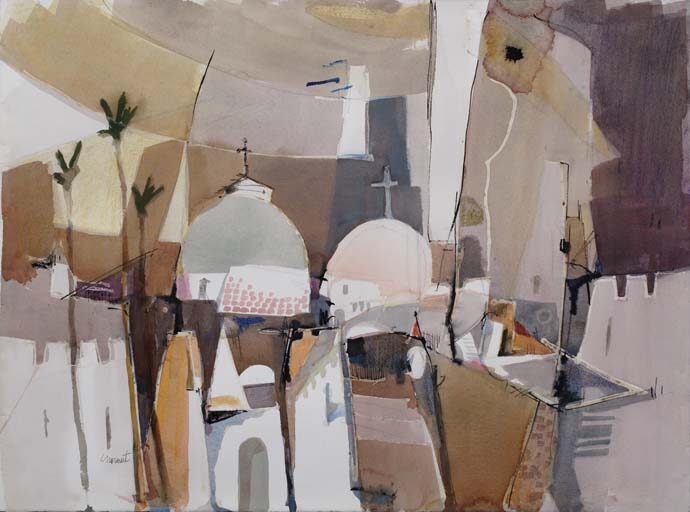
Looking Back, by Corky Normart (Jerusalem series)
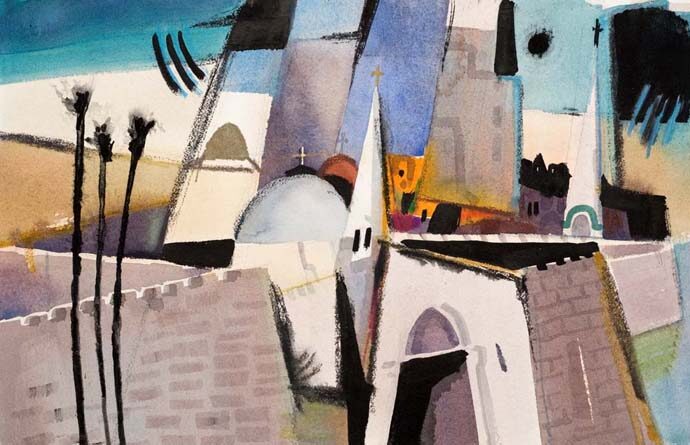
Three Palms, by Corky Normart (Jerusalem series)
Tell me about your furniture design. Are they all done with glass work, and is there a lighting component built in?
The table I designed did include glass, and I have done two or three other smaller tables all with glass and metal. The large table does have a three-way lighting system built in, but smaller works depend on outside light to show off the glass. I just finished a preliminary design for a garden gate using glass and might do my front door with glass. I have done a door with glass and metal for a very contemporary home in Madera.
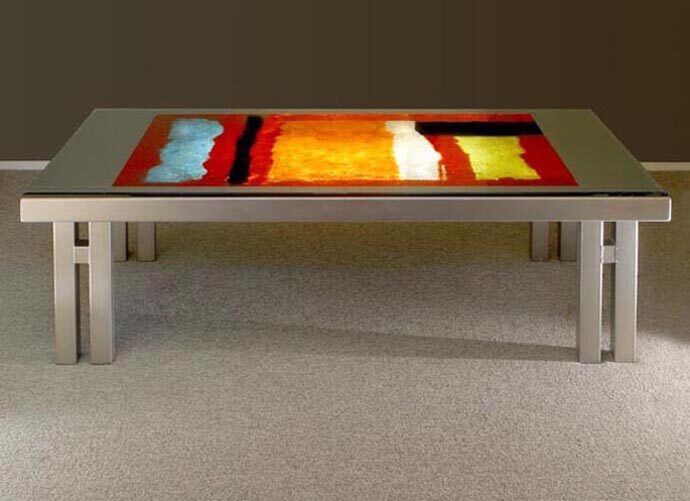
Stainless steel dining table, Corky Normart
Your sculpture also incorporates glass work. Does this sculpture offer you a similar creative outlet as the stained Dalle de verre windows but in a secular setting?
I think the heavy colored glass that I use, with sunlight glowing through it, is one of the most exciting visual sensations a person can have. Just a chunk of this material set on a sunlit window sill is exciting to see. I like to point out that “faceted” glass that I use is not like traditional leaded glass that’s relatively thin. Dalle de verre is five-eighths to one inch thick, and edges are faceted to give it a special sparkle.
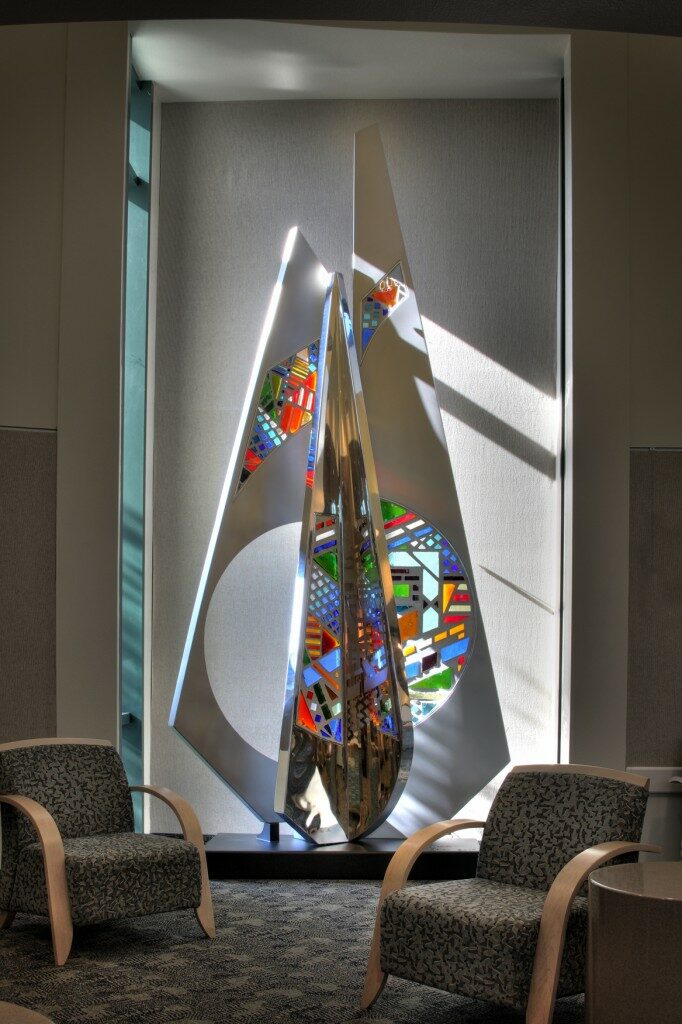
Waiting for Mariah, by Corky Normart
I understand you balanced your art alongside a career in advertising. Was there a good synergy between the two?
I functioned primarily as a Creative Director at the agency, setting direction and approving everything that went through the shop. When I first started, I was also artist, copy writer and salesperson. I especially enjoyed television production and produced hundreds of TV spots over the years.
Were you always creative, and can you point to any turning points in your years growing up that influenced your path as an artist?
I was always interested in drawing and painting, even in grammar school. I was fortunate to have a very inspiring art teacher in high school who was an excellent painter but also an accomplished commercial artist. I learned both approaches from him and stayed in touch for years afterwards.
Where do you see your work going from here?
Right now I have a sculpture commission using steel and glass underway, a large acrylic half completed, and this is the time of year that the fields start to bloom with the Sierras in the background — a perfect opportunity for watercolor. I just want to do more of everything and get better at it. I would like to do more sculpture combining glass and polished metal.
Last, I wanted to ask you about some of your favorite things — whether those things directly impact your work or just make you happy.
Cityscapes and buildings always give me a little tug. This time of year with the magnificent blossoms coming out, pink, white, purple, cloudy skies, blue mountain backgrounds, you can’t help but want to paint. I enjoy music when I’m painting, and one time many years ago I tried to relate a whole series of paint colors with musical notes. There is a relationship, but it was more than I could handle. I think we all have similar responses to basic colors, but I’m not sure what happens as colors blend. I read a lot and have enjoyed the books about our founding fathers — then I’ll switch to spy stories for a break and always seem to return to Saroyan because I recognize so much of what he wrote about in his early (and best) works. We recently went to Stanford University and spent the day reading his unpublished novels and short stories, notes, comments and letters — really an enjoyable day. This kind of leads me to my conclusion that no one can guarantee a good or bad work as I think Saroyan proved. Everything has some artistic value to it, and the answer is to just keep painting, writing, playing. Whatever it is that you want to do or be, you just keep at it.

